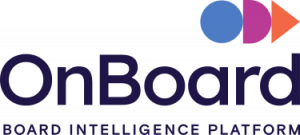3 Steps to Support Association Membership Using Data Analytics

New Year, New You. Sound familiar? Similar to personal resolutions, lots of associations use the new year to reevaluate and identify areas where they’d like to develop during the year. Like improved fitness and healthier living in one’s personal life, data and analytics is often on the “I know I should do it” list for organizations, yet many associations fail to take the steps to get started.
We frequently hear questions like – “What exactly is data analytics?”, “Why is it important?”, “What’s the difference between analytics and reporting?” After associations get a better understanding of these topics the next stumbling block is usually “How do I get started?”
What is Reporting versus Analytics?
The difference between reporting and analytics can sometimes confuse people. Here’s a simple breakdown:
- Reports share information on what has already happened in your association in an organized, straightforward format. You need reports to help run your association. For example, a report is the weekly number of new members who joined your association.
- Data Analytics are typically more concerned with why your association has performed this way, what will happen in the future, and what actions you can take to influence the results. With data analytics, you try to look at data over time and across data sources for a 360-degree view of your members and their activities. You can use this combination of data to analyze trends, gauge what members value, predict their behaviors, and take action.
Here are three steps to help you get started using data analytics to support and grow your association membership
Step 1: Create a Data Analytics Plan
The first step in starting your data analytics journey is to create a plan. If you have analytics without a plan, it won’t serve your goals. As you create your plan, remember to focus on outcomes, not outputs. What questions are you trying to answer with data analytics? Some examples to consider:
- What are the main drivers of member retention?
- What do members value most about their relationship?
- Which products and services should be bundled with member dues vs. sold separately?
Collect Your Data Even if it’s Not Perfect
Your plan should start by collecting your data. As you look at your data, be sure to prioritize the data that is most important to you and then determine a way to consolidate it. In this initial phase, don’t get hung up on data quality. Some people think that their data needs to be perfect to get started. That isn’t the case at all. Most associations can still identify meaningful trends and insights with their current data as they work towards improving it over time. Just get started and keep refining it. Find out more about overcoming your fear of dirty data in this blog post.
Create a Data Task Force & Establish Data Definitions
It’s important to socialize your data analytics plan and make it a part of your work culture. We suggest you create a data task force. Bring together people throughout your organization that have different points of view but are curious about data and want to learn. Set up meetings, meet regularly, and leverage your task force to build a data infrastructure with definitions and consistent terms that are common language for everyone in your organization to understand.
This step is more helpful than many originally think. It’s not uncommon to find people within an association that have different perspectives on how to define lapsed members and how to measure member retention, for example. Adding to the challenge, the increasing number of systems (e.g. AMS, LMS, Community, Event platform, Marketing Automation), can make it difficult to identify which application should be the system of record for each data point. Check out this Ultimate Guide to Data Governance for tips. You can also use this as a great onboarding tool to educate new employees on company data.
Pace and Protect Yourself
Make sure you pace yourself as you implement and socialize your data analytics plan. You will be shifting the way people think and operate. Be patient as people adjust and learn. You don’t want risk-averse people to give up on the project.
Protect yourself from failing by focusing on the good. Perfect data is the enemy of “getting it done!” Don’t get stalled by focusing on edge cases. For example, if 80 per cent of your data is good quality, you can still identify insightful trends with data analytics. It’s a bit of a mindset shift from reporting, but an important shift to make.
Step 2: Aim for Quick Wins by Making Data Analytics Work for You
There are some easy ways to quickly put your data to work. Start simple and then challenge yourself to move to more complex scenarios.

- Visualizing membership data – Start with a singular visualization. Even if you’re a beginner, you can start with the graphing capability from a simple spreadsheet to see the value of looking at data in graph format versus cells in a spreadsheet. Try starting with membership data like the number of new members or your retention rate because your colleagues are used to seeing this type of data. If you have limited resources, you can learn how to do this by watching tutorials on YouTube or Microsoft.
- Share data visualizations at department and leadership meetings – Sharing visualizations is a very impactful way to bring metrics to life. Use dashboards in meetings to begin introducing data analytics into your culture. Visualizations help organizations spot trends more easily and can help show what you need to do to achieve your goals.
Step 3: Turn Your Data Analytics Insights into Action
Think about how data analytics can help dig deeper into some of the bigger challenges your association may be facing. Usually, you’ll find that once you start to look at your data and trends, you end up with additional questions that allow you to dig deeper. For example:
- You see your event registration numbers are down. Why? Is it down for all member types?
- Turns out the biggest driver in the downturn is young professionals. Why?
- In looking at behavioral data for your young professionals, you see that they engage less in your online community than other members.
- You can also see that community members typically buy 5x more products from your association than other segments. What next?
Armed with these insights, you can conclude that if your young professionals were more active in your community, they’d be likely to purchase more products, which includes your events. You can then begin to promote your community to young professionals and new association members alike, so they start to engage at the same levels as your other segments, leading to increased event purchases.
That’s turning insight into action!
No matter how far along you are in your data analytics journey, keep it moving! To hear more about how to get started and put your data to use, join the upcoming webinar series. You can register now for the second session “How to Drive Member Retention with Data Analytics” on March 31.
Mark your calendars and watch here for links to the next webinar in the series, “How to Drive Non-Dues Revenue with Data Analytics” on May 11.
To dive deeper into how data analytics can help your association, download the Association Analytics’ guide: How to Turn Your Association’s Analytics into Action.






















